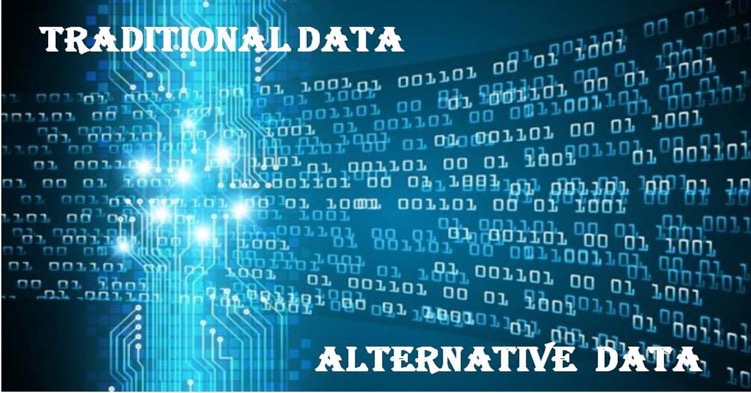As somebody who has worked with all aspects of outbound call centres for many years, I realised early on that one of the biggest challenges facing these businesses is the ability to reach and connect with prospects and customers.
In the current times, customers are bombarded with calls, some are fraudulent, some are robocalls and voice messages. Then there are also poor dialler strategies where customers receive 5 or more call attempts in a period of 30 minutes!
According to some staggering research and open-source statistics, as many as 94% of unidentified calls are not answered due to concerns about spam or fraud. In developing countries there is also the reality that most blue-collar workers are not allowed to answer calls during working hours.
A further challenge within emerging markets is the fact that a high percentage of individuals use more than one SIM card or mobile number, making it even more difficult for any business to connect successfully with a customer or prospect.
Low connect rates are not only a third world problem, as in contrast with manual labour workers, office-based workers are usually tied up in meetings or client engagements which makes it equally difficult to get hold of your customer or prospect.
Add to all of these challenges the advent of products such as Truecaller, (www.truecaller.com), enabling individuals to screen calls more effectively and thus avoiding contact from undesirable entities (this is particularly an issue for collections activities).
Call centres use various metrics, or Key Performance Indicators (KPIs) to measure productivity and identify focus areas for their outbound campaigns. Some of the KPIs used in both inbound and outbound call centres are as follows:
- Answer Success Rate (ASR). This is the ratio of successfully answered calls to attempted calls.
- Service Level. This is the percentage of inbound customer calls answered by the agent within a specific threshold (specified number of seconds).
- Average Handle Time (AHT). This measures how long an interaction with a customer takes. It begins from the moment a customer contact commences and ends once an agent finishes all work associated with the customer interaction.
- First Response Time (FRT). The time elapsed between a customer raising a service request and an agent first responding to it. Many companies include a baseline FRT in their service level agreements, which means they must respond within a specified timeframe.
- First Call Resolution (FCR). This measures a business’s ability to resolve a customer’s question or request the first time they reach out for that specific issue. A successful first call resolution means that no follow-up is necessary.
- Call Abandonment Rate. The number of abandoned calls as a percentage of all calls made to the contact centre. This is one of the most widely tracked metrics in the service industry.
- Calls Handled. Handled means when the call ends. For instance, you can have 10 calls as Answered within a 15-minute interval – and 8 of them may be Handled within the same interval, but 2 of them pass the reporting interval boundary. Those 2 calls will be counted as Handled in the next reporting interval.
- Average After Call Work Time. The average time spent after a call across call centres is 45 seconds. This means that an agent takes an average of 45 seconds to complete their after-call work and become available for the next call.
- Occupancy Rate. The percentage of the time that agents spend dealing directly with customers and waiting for calls. Call centres aim to have an agent occupancy rate between 85% and 95%, in order to provide the best service.
- Schedule Adherence. The percentage of time in which the activity the agent completed matches their scheduled activity. For example: If an agent is scheduled to work on tickets and at that time, they perform work on tickets then it would count towards the schedule adherence.
- Call Forecast Accuracy. This can be defined as the difference between the amount of work per period projected to be presented and the amount of work that is actually presented.
- Cost per Call (CPC). This metric is used to determine the allocation of budget per call. It uses the Total Cost of All Calls divided by the Total Number of Calls.
- Conversion. Refers to the relationship between the number of leads and the number of sales. The more leads you can convert into sales, the higher the conversion rate.
- Customer Satisfaction. This measures how happy (or unhappy) customers are with a company’s products, services, or experience. Customer satisfaction consists of a customer’s perceived quality, value, and expectations of a company and what they offer. Customer Surveys are used for this measurement.
I am going to focus on the very first KPI on the list above, the Answer Success Rate (ASR). As the very first tracked metric in an outbound calling strategy, it is crucial to the campaign success as it has a knock-on effect on all subsequent metrics. For this reason, I aim to explore the implementation of real-time availability models as well as other tools that are available to assist call centres with increasing their ASR.
Before we explore real-time availability models and examine what they are, let us take a look at the definition of ASR and what it is trying to measure and achieve.
The ASR is also known as the ‘hit rate,’ ‘pickup rate’ or in certain call centres the ‘connect rate.’ It is important to note that some inbound call centres use the ‘connect rate’ as a different KPI so it is important to understand what the KPI is trying to measure.
The ASR is a simple metric and refers to the number of phone calls that are answered, as a percentage of calls placed. This metric is extremely important for outbound call centres as it is the first step or metric in the outbound call process. All subsequent metrics are calculated as percentages of the answered calls, so getting the ASR rate as high as possible is crucial to a successful marketing strategy.
The most important thing to note about the ASR, is that it is not something that can be influenced by the actions of the call centre agents themselves, as they do not have control over the numbers that are dialled, or when the calls are placed (particularly in a predictive dialler environment).
A low ASR highlights the need to improve other areas of the operations such as dialler strategies or alternative data/solutions to help identify when a customer is available and/or likely to answer a call. The ASR also plays a key role in capacity planning and allocation of agents across certain days and times of the week.
One of the more well-known methods to increase the ASR is the use of ‘best time to call’ models which predict the day of the week or time of the day that is best for making contact with your customer or prospect. These models are usually built in-house based on historical data. A challenge with using these models is that they require the call centre to be more hands-on and allocate more resources during peak availability times if they wish to get the most value from the models.

Although these models are useful to help increase the ASR, they are also extremely resource intensive to implement as data needs to continuously be analysed and resources rescheduled to ensure that the model predictions are optimally applied.
With the recent pandemic and the requirement for more call centre agents and customers to work from home, it is an even bigger challenge to determine when somebody will be available to take a call. Historic data based ‘best time to call’ models have lost a lot of effectiveness as individuals routines have changed dramatically.
To stay ahead of the competition and ensure that agents continue to be productive, forward-thinking call centres are now making use of alternative data and software tools to determine customer availability.
Some of these newly developed solutions make use of real-time availability models, which are a toolset that uses alternative data sources to not only determine when a customer will be available to take a call but also predict for how long the customer will be available to engage with the agent.
Simply put, the real-time availability models analyse customers availability – both physically and mentally to engage in conversation. They prioritise the dialling list in real time, identifying which customers are most likely to answer a call placed in the very near future, and predicting how long the customer will be available.
These models make use of data from a variety of platforms where customers log in and accept terms and conditions allowing the host to use and process certain anonymised metadata. These solutions gather the metadata and use artificial intelligence (AI) and machine learning algorithms to determine when customers are using their mobile phones for leisure or non-critical purposes and are thus likely available to take a call and have an engaged conversation.

Well defined real-time availability models can be rapidly integrated into the call centre dialler environment making use of the existing software systems with minimal impact on the agents or dialler operations. Customers and prospects can then be prioritised in real-time when they become available to take a call and pushed to the top of the dialler queue.
Call centres making use of these tools can choose to only allocate a certain percentage of each dialler campaign to be prioritised, ensuring the use of best practice champion/challenger strategies to quantify the increase in ASR achieved from using the alternative data models.
Increasing your call centre’s ASR provides multiple benefits:
- Agent efficiencies and general morale of the agents. This means more positive and happy agents as they are now not wasting a lot of time on voice messages or on customers who are unable to engage and thus quickly dismiss the calls. Agent capacity can also be managed in a more efficient manner to increase overall performance.
- The alternative data real-time models are implemented within the dialler environment and require no change to existing business practices or any training requirements. The agents continue their daily activities in a business as usual manner, thus avoiding any operational disruptions.
- Better customer engagement and meaningful conversations with customers. Agents will now be connected to customers who are more likely to be available for an engaged conversation (i.e., both physically and mentally available). This results in more successful outcomes in terms of sales and collections campaigns. (It is important that all contact numbers related to customers are removed from the dialler once you have successfully connected with the customer, to ensure that the customers do not receive multiple phone calls).
- An increase in conversion rates and Return-On-Investment (ROI). An increase in the ASR will ultimately also have a positive impact on quote rates, sales rates and/or conversion rates.
In an ever-changing world where over the past two years, disruption and a distributed workforce is the new norm, it is more important than ever to look for alternative tools and methods to connect with your customers or prospects and to ensure that you leave them with a positive experience.
For more information on real-time availability models, and how they can benefit your business, please contact me and I will be happy to discuss the work that we have been doing in this area.
About the Author
Ulandi Steenkamp is a Client Solutions Consultant at ADEPT Decisions (www.adeptdecisions.com).

